Reviews
Lech Kowalski
USA, 1980
Credits
Review by Victoria Large
Posted on 05 September 2011
Source Digital projection
Categories American Punk
The history of the Sex Pistols on celluloid is somewhat convoluted. While the best known film relating to the band is probably Alex Cox’s Sid and Nancy, a romanticized, dramatic take on the doomed affair between the late Pistols’ bassist and his murdered American girlfriend, the definitive Pistols film for serious fans is more likely Julien Temple’s 2000 documentary The Filth and the Fury, which provides a thoughtful and comprehensive view of the band’s triumphs, tragedies, and legacy. It’s worth noting, of course, that The Filth and the Fury absorbs essential footage from both Temple’s 1980 pseudo-documentary The Great Rock ‘n’ Roll Swindle and American filmmaker Lech Kowalski’s D.O.A.: A Rite of Passage, a 16mm punk chronicle released in the same year as Swindle. The rarely-screened D.O.A. was ripe for selection to the HFA’s “American Punk” series: as an American’s take on this seminal English punk band’s only U.S. tour, D.O.A. acts as a fitting nod to the significance that so many British acts held for punks across the pond. And while The Filth and the Fury has the benefit of perspective - a clear-eyed coherence not found in other films about this band - D.O.A. is tough to beat for fiery energy and you-are-there immediacy.
The film includes galvanizing concert footage, often with subtitled lyrics. If you’ve managed to forget how ferociously powerful the Pistols’ music was and still is, D.O.A. is an excellent reminder. Johnny Rotten lurches theatrically about the stage, eyes darting, occasionally seeming to glare right into Kowalski’s camera. “Anarchy in the U.S.A.,” he spits, and the lyrics crawl helpfully onscreen. “Get pissed/Destroy.”
Kowalski’s camera also alights on audience members with spiked hair and heavy makeup, and he interviews enthusiastic onlookers (including a young man who somewhat presciently classes the Pistols among rock’s heaviest hitters, Elvis and The Beatles) as well as outraged attendees and Bible-wielding protestors. The Pistols’ manager Malcolm McLaren reportedly booked the band into venues that he knew would be problematic: clubs in Tulsa and Memphis and San Antonio that frequently featured country and western acts. Kowalski captures the fraught energy of this tour-cum-suicide mission. In one of the documentary’s most surreal moments, we see The Sex Pistols’ name on a marquee with Merle Haggard.
In addition to the footage of the Sex Pistols in the U.S., Kowalski offers up interviews and performances from other punks back in Britain. We get sweaty, ecstatic live footage of Poly Styrene and The X-Ray Spex, and a disconcertingly young Billy Idol turns up fronting Generation X. Other performers include The Dead Boys, Sham 69, and ex-Sex Pistol Glen Matlock tearing through “Pretty Vacant” with his new band, The Rich Kids. Some of this may be tangential to the Sex Pistols and their tour, but it helps to paint a picture of the era, and it’s thrilling to watch.
Yet I must acknowledge that D.O.A. isn’t simply a celebration of punk rock. It really couldn’t be: The Sex Pistols’ American tour ended with the band breaking up. Scenes from their last concert are here, complete with Johnny Rotten’s famous concluding question: “Ever get the feeling you’ve been cheated?” It’s also impossible to ignore the evidence of Sid Vicious’ heroin addiction and increasingly self-destructive behavior. We see him bleeding onstage, “GIMME A FIX” carved into his chest. There’s a moment outside of one of the venues where he has to be guided in the direction of the door.
Kowalski’s infamous interview with Sid and Nancy is here, too. The pair of them lay in bed, with Sid barely able to keep his eyes open, and struggling even more mightily to offer coherent answers to Kowalski’s questions. At one point, Sid accidentally singes Nancy with his cigarette. (I was disturbed to hear tittering in the theater during these scenes, but perhaps it was laughter of the nervous kind: what was unfolding on the screen was a genuine horror.) D.O.A. was released less than two years after Nancy’s murder and Sid’s arrest for the crime and subsequent fatal overdose, and the freshness of the tragedies makes a profound contribution to the despairing note that the film closes on.
But there’s even more to the film’s sense of sadness than the long shadows cast by the senseless deaths of two very young people. At maybe halfway through the film we meet London Council member Bernard Brooke Partridge, a man who calmly denounces the punks and insists that the status quo will win out. Kowalski follows Partridge’s first appearance with footage of rioting in Britain, soundtracked by The Clash’s “Police and Thieves.” Watching the film in 2011, it was hard not to be reminded of recent scenes from the evening news. Britain is still the scene of social and economic unrest, and many young people still believe that they have no future. Near the end of the film, Kowalski knowingly juxtaposes clips of the interview with Partridge (“They can’t beat us. And they’re not going to beat us.”) and the depressing audience with Sid Vicious (“What was the question?”). It feels now like a pointed reminder that punk changed a lot of things—but it didn’t change everything.
More American Punk
-

Times Square
1980 -
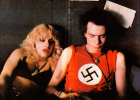
D.O.A.: A Rite of Passage
1980 -
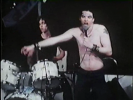
The Decline of Western Civilization
1981 -
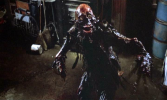
The Return of the Living Dead
1985 -
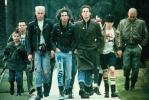
Suburbia
1984 -
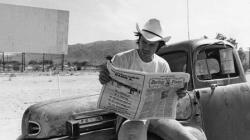
Border Radio
1987 -
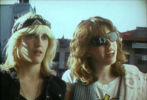
Desperate Teenage Lovedolls
1984 -

The Blank Generation
1976
We don’t do comments anymore, but you may contact us here or find us on Twitter or Facebook.



